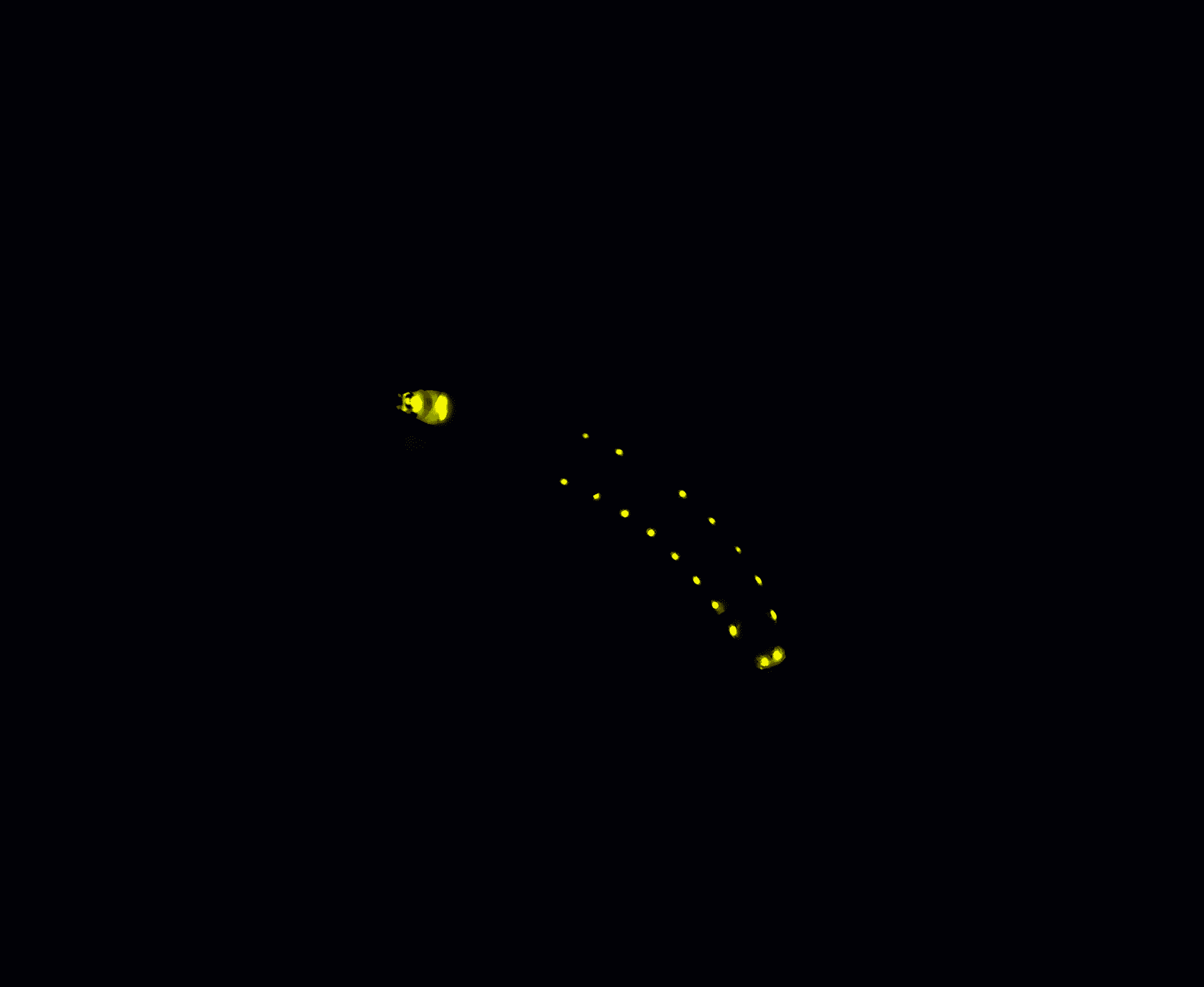The sizes of the active sites on railroad worms’ luciferase enzymes controls the energy level, and hence color, of the light they produce.
Introduction
A moonlit forest filled with flitting balls of light may seem like a scene from a fairy tale, but it’s a real-world phenomenon thanks to some insects’ internal chemical reactions. While most bioluminescent beetles have a yellow or green glow, one, known as the railroad worm, also produces a red light.
The Strategy
A close relative of fireflies and native to the Americas, railroad worms (Phrixotrix hirtus) have several yellow-green dots of light along their backs, bringing to mind the brightly lit windows of a train passing in the night. A red light is emitted from their heads, which helps them both to navigate in the dark and to intimidate predators. As adults, males morph into beetles, while the females remain in a glowing, worm-like state. This helps males locate females for reproduction.
Interestingly, they have been found to have control over their light-emitting powers, glowing more intensely when disturbed and alternating between colored glows.
But how, exactly, do they create this multicolored light show? Although bioluminescence can occur either through a chemical reaction of the creature’s own, or through the presence of bioluminescent symbiotic bacteria, railroad worms use the former. A specialized enzyme known as luciferase has an active site to which a luciferin molecule binds. Subtle changes to the molecular structure alter the colored glow of different bioluminescent species.
Yellow-green luciferases have a smaller active site, which means that when the luciferin binds, it is more tightly compressed, creating an electrostatic repulsion between the two molecules that releases high-energy light, which we perceive as green or yellow. In the case of red luciferase, the active site is larger and less rigid, which leads to a reduction in the electrostatic repulsion between the luciferin and the luciferase. The light produced is less energetic and is perceived as red.
Just how much of an energy difference is this? Red light is at the lower end of the visible spectrum, with red photons of light emitting about 1.8 electric volts of energy, compared to the 2.4 electric volts emitted by a green photon.
The Potential
Medical treatments seek to locate and target specific tissues within the body in minimally invasive ways, and one method that allows for this is known as bioimaging. Using light and fluorescence, among other tools, it can be used to visualize biological processes as they occur, or to allow improved 3D imaging.
Beetle enzymes that produce bioluminescence are commonly used for bioimaging, and the red enzymes are highly useful for targeting tissues that typically absorb and neutralize lights in the blue-green spectrum. In mammalian cells, hemoglobin and myoglobin-rich tissues, like muscles and blood, are particularly difficult to image, but utilizing enzymes which produce red light could help target these tissues in biotechnological applications.





